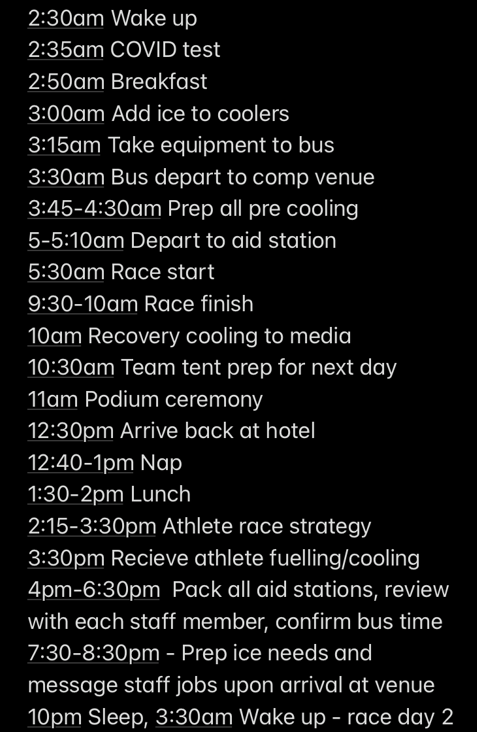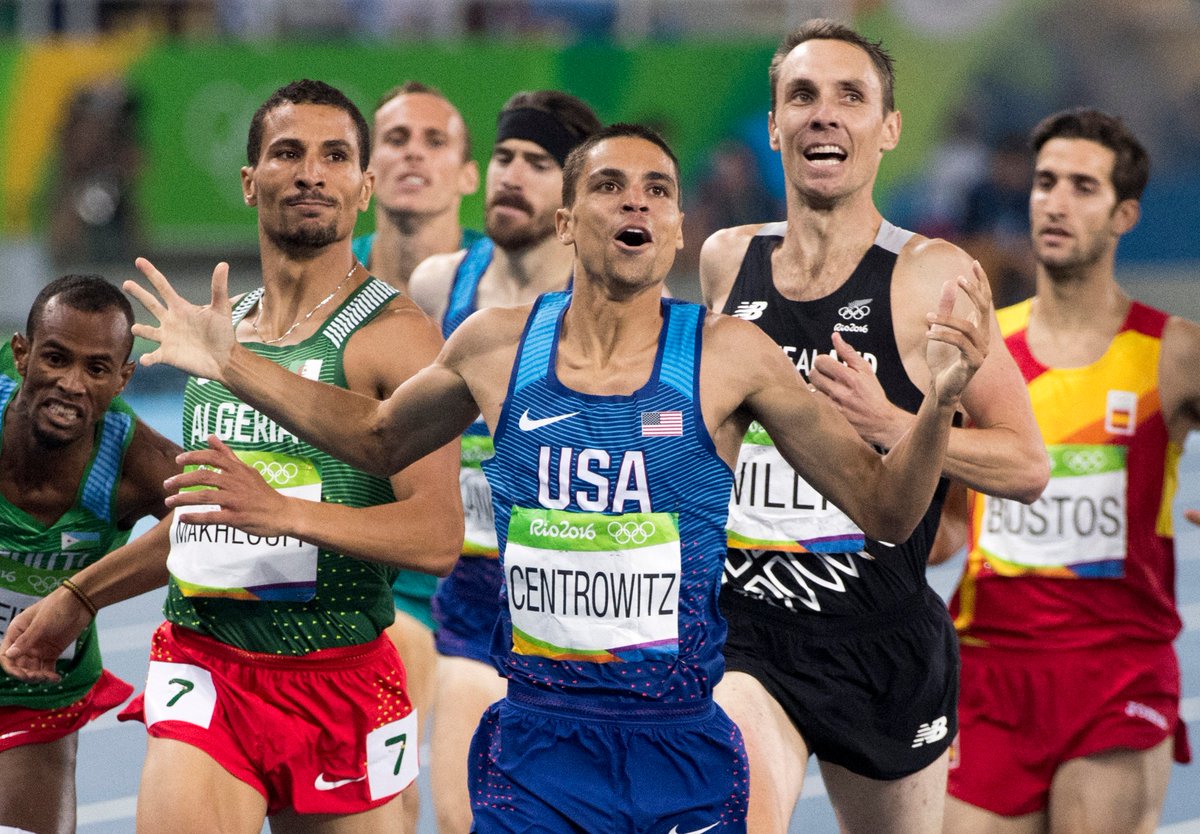
Have you heard soft running surfaces reduce injury risk?
I thought that made sense
But the answer is not that simple
Learn how changing surface impacts:
• Muscles
• Tendons
• Bones
🧵
I thought that made sense
But the answer is not that simple
Learn how changing surface impacts:
• Muscles
• Tendons
• Bones
🧵
Disclaimer!
Speed plays a huge role on effect of surface interaction
This is controlled in many studies but not realistic
I.e typically people would run slower on sand than pavement
Here’s what you need to know from @BiomechMax @Brad_Beer chat on @tppshow1 ⬇️
Speed plays a huge role on effect of surface interaction
This is controlled in many studies but not realistic
I.e typically people would run slower on sand than pavement
Here’s what you need to know from @BiomechMax @Brad_Beer chat on @tppshow1 ⬇️
Factors affecting training response to surfaces:
• Running style
• Foot strike
• Ground reaction force profile
• Control of stiffness
• Footwear (for more on this see ⬇️)
• Running style
• Foot strike
• Ground reaction force profile
• Control of stiffness
• Footwear (for more on this see ⬇️)
https://mobile.twitter.com/Gareth_Sandford/status/1382062261745770498
Different surfaces to consider:
• Pavement (asphalt, concrete)
• Packed down trails
• Track
• Treadmill
• Grass
• Sand
• Pavement (asphalt, concrete)
• Packed down trails
• Track
• Treadmill
• Grass
• Sand
https://twitter.com/stevewillis_NZ/status/1053150111595810816?s=20
Body demands change on different surface types
When you run on sand (soft)
• You get no energy return from the ground
• The sand dissipates
• Note non-wet sand different to wet sand
Pavement
• Ground is highly responsive
• Because it doesn’t deform
When you run on sand (soft)
• You get no energy return from the ground
• The sand dissipates
• Note non-wet sand different to wet sand
Pavement
• Ground is highly responsive
• Because it doesn’t deform
If you maintain the same speed on sand and pavement
Muscles work harder on the sand
Because you get less return on touch down
This creates more mechanical work
And is hard on the muscles and tendons
Muscles work harder on the sand
Because you get less return on touch down
This creates more mechanical work
And is hard on the muscles and tendons
Running on sand
Can increases achilles tendon injury risk 10 X
Compared to running on asphalt
researchgate.net/publication/33…
Can increases achilles tendon injury risk 10 X
Compared to running on asphalt
researchgate.net/publication/33…
On pavement you strike the ground
And all forces come back
Propelling you forward
Less muscle work is done compared to sand
And all forces come back
Propelling you forward
Less muscle work is done compared to sand
So far we have covered
Hard surfaces
• All forces come back
• Less muscle work done
Soft surfaces
• Muscles and tendons do more work
• More demanding on energy systems
But that is just half of the story...
Hard surfaces
• All forces come back
• Less muscle work done
Soft surfaces
• Muscles and tendons do more work
• More demanding on energy systems
But that is just half of the story...
On pavement
• More bone loading
• Greater musculoskeletal demand
• More bone loading
• Greater musculoskeletal demand
https://twitter.com/BiomechMax/status/1230885907433218052?s=20
On Sand
• Surface feels soft
• But uneven surface does not mean soft is better
• The increase in muscle force may contribute to more bone loading
• Surface feels soft
• But uneven surface does not mean soft is better
• The increase in muscle force may contribute to more bone loading
When we run on sand
We regulate extra muscle demand by reduction in speed
NOT the surface
Perhaps this is a what is protecting us!
We regulate extra muscle demand by reduction in speed
NOT the surface
Perhaps this is a what is protecting us!
We aim to minimize energy cost
When moving between surfaces
This is why we walk to the store
Rather than MC hammer walk to the store
When moving between surfaces
This is why we walk to the store
Rather than MC hammer walk to the store
Interaction between shoes and strike pattern is confusing
Tease out:
• Which foot strike pattern (rear – mid – fore- foot)
• With which specific shoe
Why does this matter?
Tease out:
• Which foot strike pattern (rear – mid – fore- foot)
• With which specific shoe
Why does this matter?
https://twitter.com/Gareth_Sandford/status/1440031686855593999?s=20
Most shoes are geared towards forefoot striking
To asses shoe impact you should hold constant either:
• The shoe or
• The foot strike pattern
To asses shoe impact you should hold constant either:
• The shoe or
• The foot strike pattern
If you are a rear foot striker
Transitioning into softer shoes
Be aware whilst this may lessen knee stiffness
It will increase ankle stiffness
Consider alongside your injury risk profile
Transitioning into softer shoes
Be aware whilst this may lessen knee stiffness
It will increase ankle stiffness
Consider alongside your injury risk profile
Findings from @UofMHealthSci
After controlling for
• Shoes
• Stride pattern
• Speed
Peak forces were not different between surfaces
Where does this leave us?
After controlling for
• Shoes
• Stride pattern
• Speed
Peak forces were not different between surfaces
Where does this leave us?
TL: DR Summary
Does a soft running surface reduce injury risk?
• We lack consensus
• Soft surfaces increase muscle and tendon work
• Hard surfaces increase bone loading
• Strive for variance in stimulus
• Manage surface based on individual profiles
Does a soft running surface reduce injury risk?
• We lack consensus
• Soft surfaces increase muscle and tendon work
• Hard surfaces increase bone loading
• Strive for variance in stimulus
• Manage surface based on individual profiles
Thanks to @BiomechMax @Brad_Beer @tppshow1
For the discussion on a challenging topic
Full episode ⬇️
For the discussion on a challenging topic
Full episode ⬇️
https://twitter.com/Brad_Beer/status/1451839739514920960?s=20
If you enjoyed this thread:
1. Comment/send me a DM to let me know what resonated
2. Share a link to the first tweet ⬇️
1. Comment/send me a DM to let me know what resonated
2. Share a link to the first tweet ⬇️
https://twitter.com/Gareth_Sandford/status/1453442225384214530?s=20
• • •
Missing some Tweet in this thread? You can try to
force a refresh











